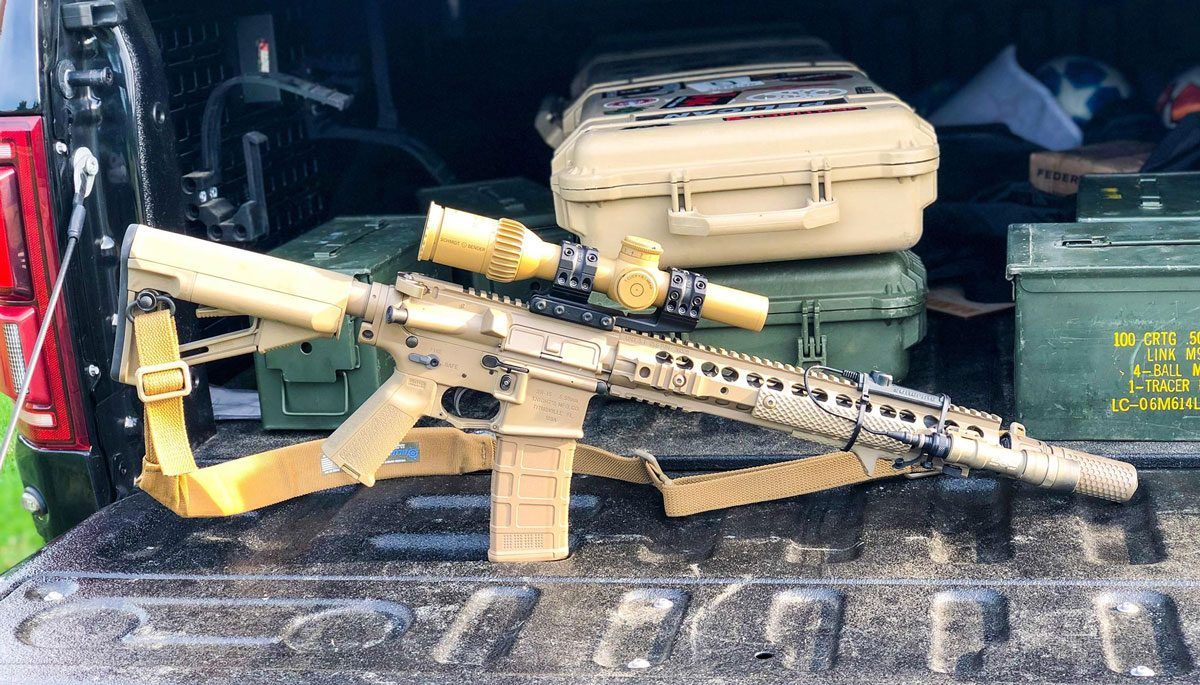
It should be no surprise that finding out what the best low power variable optic (LPVO) is involves questioning people who use them and are around them for a living. With so many optics on the market and with so many users with strong opinions and varying levels of expertise, it can be difficult to cut through the noise and make an informed choice.
Research What LPVO is Best for You
We’ve compiled the information below in the interest of saving you time, frustration, and money in the long run. While many of the low power variable optics we list here are expensive, this is one area where I would certainly “buy once and cry once”. Just try re-selling that budget optic and see how that goes.
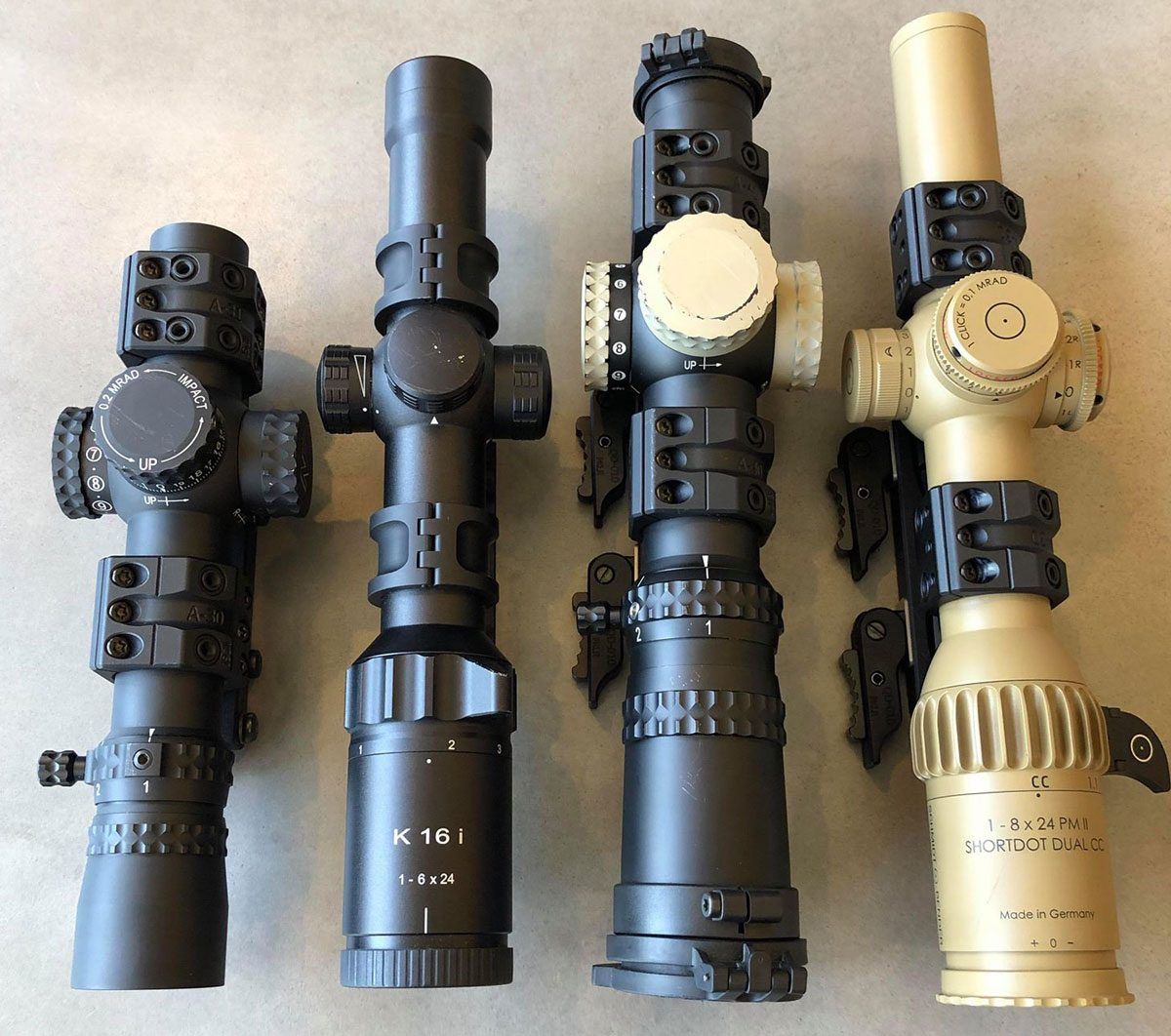
Finally, and as always, before any major purchase, don’t stop your research here. Dig deep, do your own thorough research and decide what will work best for you in your situation. In case you need a reminder, don’t buy expensive optics and potentially life-saving equipment based on info from online listicles.
Kyle Defoor on the Low Powered Variable Optic (LPVO)
A few months ago, to learn more about Low Power Variable Optics (LPVO), and why many prefer them over a red dot, we reached out to Kyle Defoor at Defoor Proformance Solutions. That article is still well worth a read. You can find that article here. For your convenience, we’ve pulled a few relevant quotes:
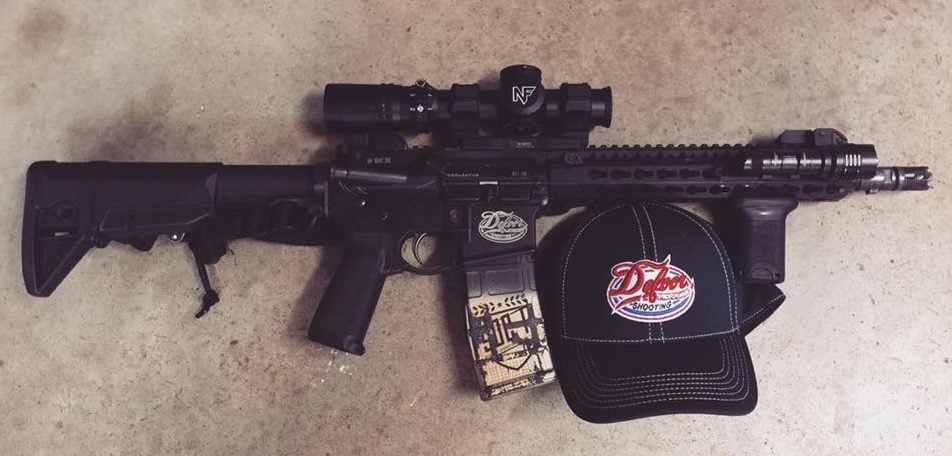
The difference in a LPV and a traditional red dot optic, is a traditional red dot optic is regulated to about 50-100 yards for positive ID….meaning that you can tell if it is a gun or a phone or a shovel or a rifle, depending on weather conditions and lighting. With a scope, that distance is 200 or a little more. It’s not really even a fair comparison. It will take everyone a few years to get on board and train, but an LPV is the way to go.
Kyle Defoor
Later on in that article we asked Kyle what low power variable optic manufacturers we should consider:
As far as low power variable optic manufacturers, essentially I would say you have your “big four”, which are Vortex, Schmidt & Bender, Nightforce and Leupold. And then you have your “other” three…Kahles, Steiner and Primary Arms. But all of those guys make LPVs that are good.
Kyle Defoor
Low Power Variable Optic – First Focal Plane vs Second Focal Plane
Before going any further, now is a good time to explain something you will read mentioned several times in the remainder of this article…first focal plane vs. second focal plane:
The easiest thing to do is pick up the scope, put it on max power, look at the reticle, and keep looking at the reticle as you turn it down to the minimum power…if the reticle stays the same size, it’s a second focal plane scope. If the reticle changes sizes when you change magnification, it’s a first focal plane scope. And the advantages and disadvantages could be another article in itself, but 6x and under, second focal plane is fine, in my experience. More than 6x, I would consider a first focal plane.
Kyle Defoor
Ridgeline on the Low Power Variable Optic (LPVO)
To learn even more about the benefits of using a Low Power Variable Optic (LPVO), we reached out to Alex Hartmann from Ridgeline. His company focuses heavily on long-range shooting, as well as producing high quality, ultra-reliable Special Purpose Rifle (SPR) builds.
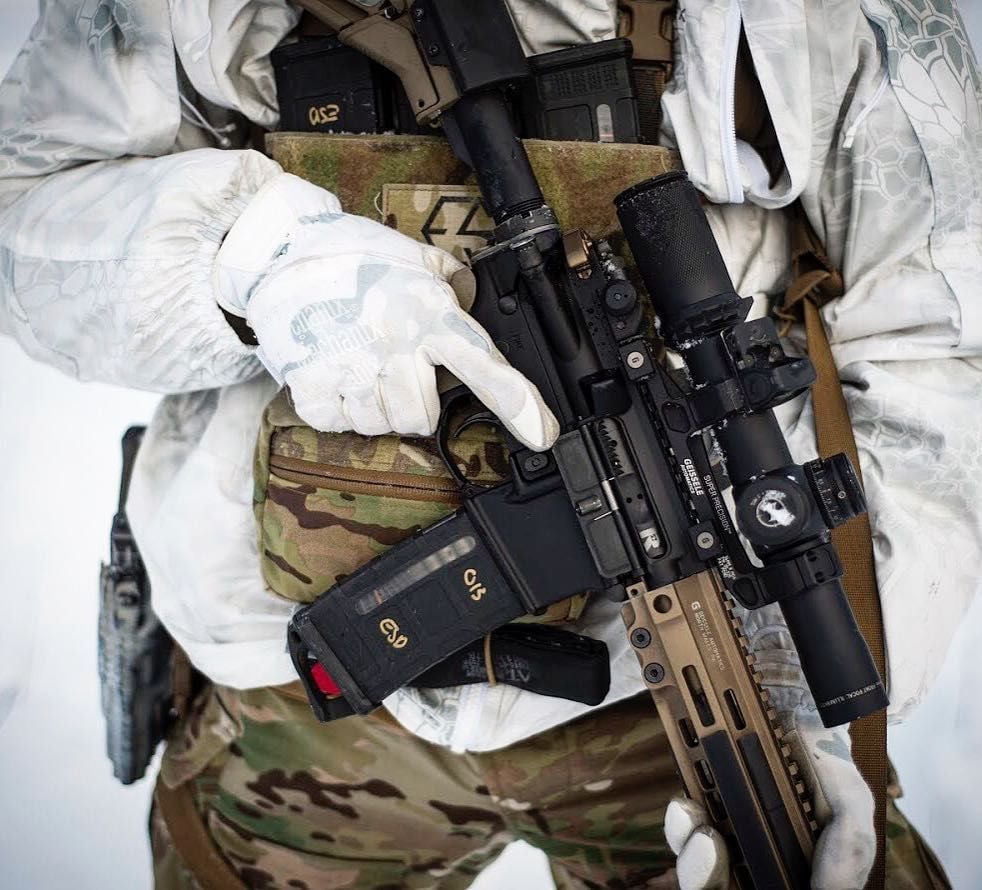
We recently talked with Alex about what Ridgeline offers, precision shooting at distance, and why he likes an LPVO. In case you missed them, here are articles with Alex about SPRs and what he recommends for hard-use carbines.
Q: Alex, by anyone’s definition, you are a true expert on low power variable optics. Can you walk us through some of your top picks for LPVOs?
Alex Hartmann, Ridgeline: When it comes to optics, I’m a huge believer in the LPVO on these guns. These guns are extraordinarily capable. There’s so many out there. We’ve gone through an optics revolution so you’re seeing so many good options from so many different manufacturers. Unfortunately, there are not a lot of inexpensive options out there that are good.
As far as what to look at…the Nightforce 1-8s, both the Nightforce NX8 and the Nightforce ATACR, they serve different roles but they are both great performers.
I still like the Leupold Mk6 1-6x…I’ve had good luck with that. Then you have the Kahles 1-6. I’d say that also the Vortex 1-6 has been a workhorse…It’s a little heavy but it has been a good performer. The Steiner 1-5 is good.
Honestly, a lot of it is personal preference. There’s some guys I know who say the eye box on the Mk6 1-6 is terrible. To be honest, I’ve never had an issue with it. I don’t expect perfection because I know that everything is a trade-off. My general purpose 14.5” has the Mk6 1-6x and an offset red dot, and there’s nothing I cannot do with that gun.
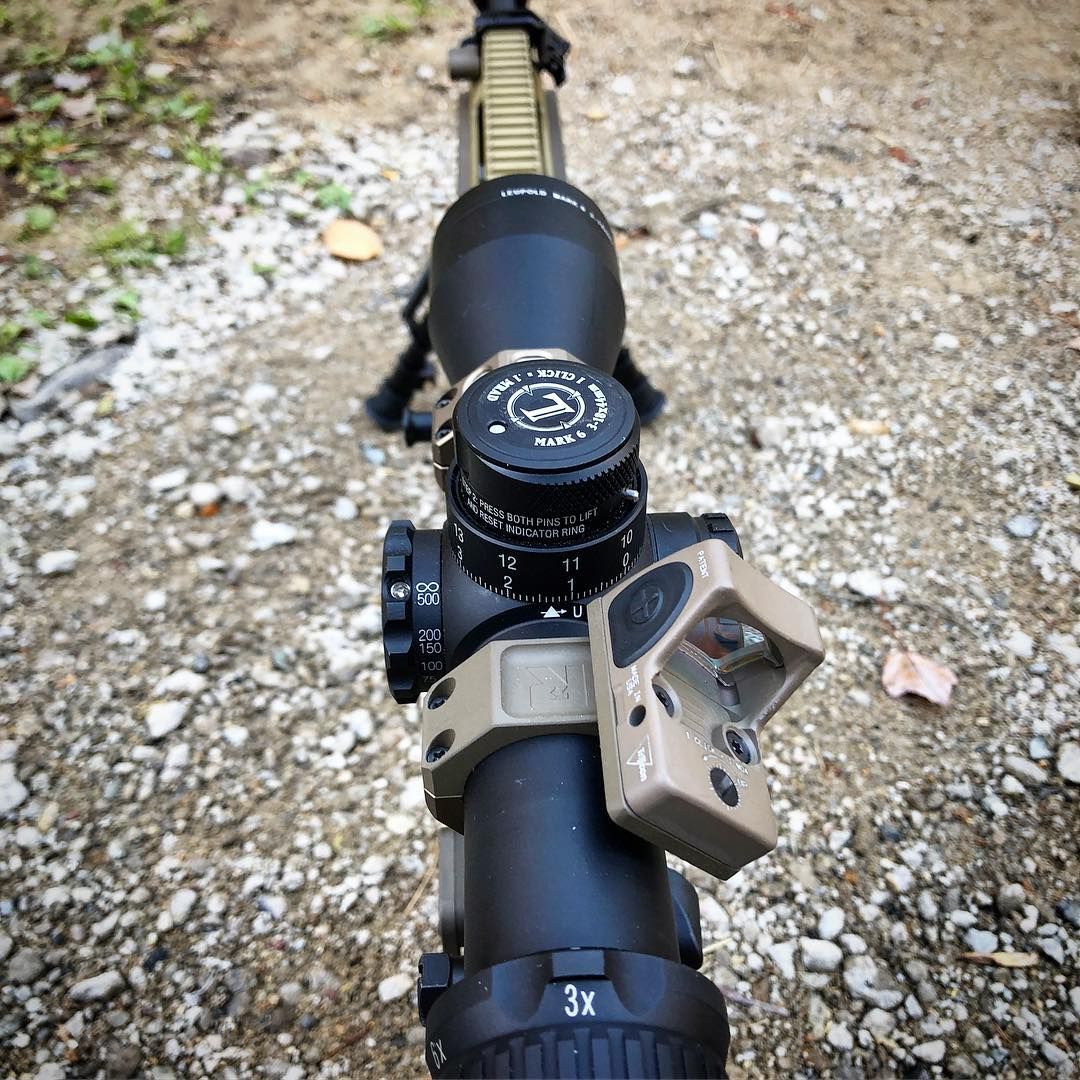
Costa Defense on the Low Power Variable Optic (LPVO)
Finally, to learn a bit more about which LPVOs, we reached out to Josh Costa at Costa Defense. We have several close acquaintances who know and trust Josh, as he has spent a large amount of time with LPVOs.
For this article, we wanted Josh to help build us a list of the best of the best. As a result of our conversation, I’d have little hesitation recommending the optics below. That said, his absolute top choice will put a very serious dent in your bank account.
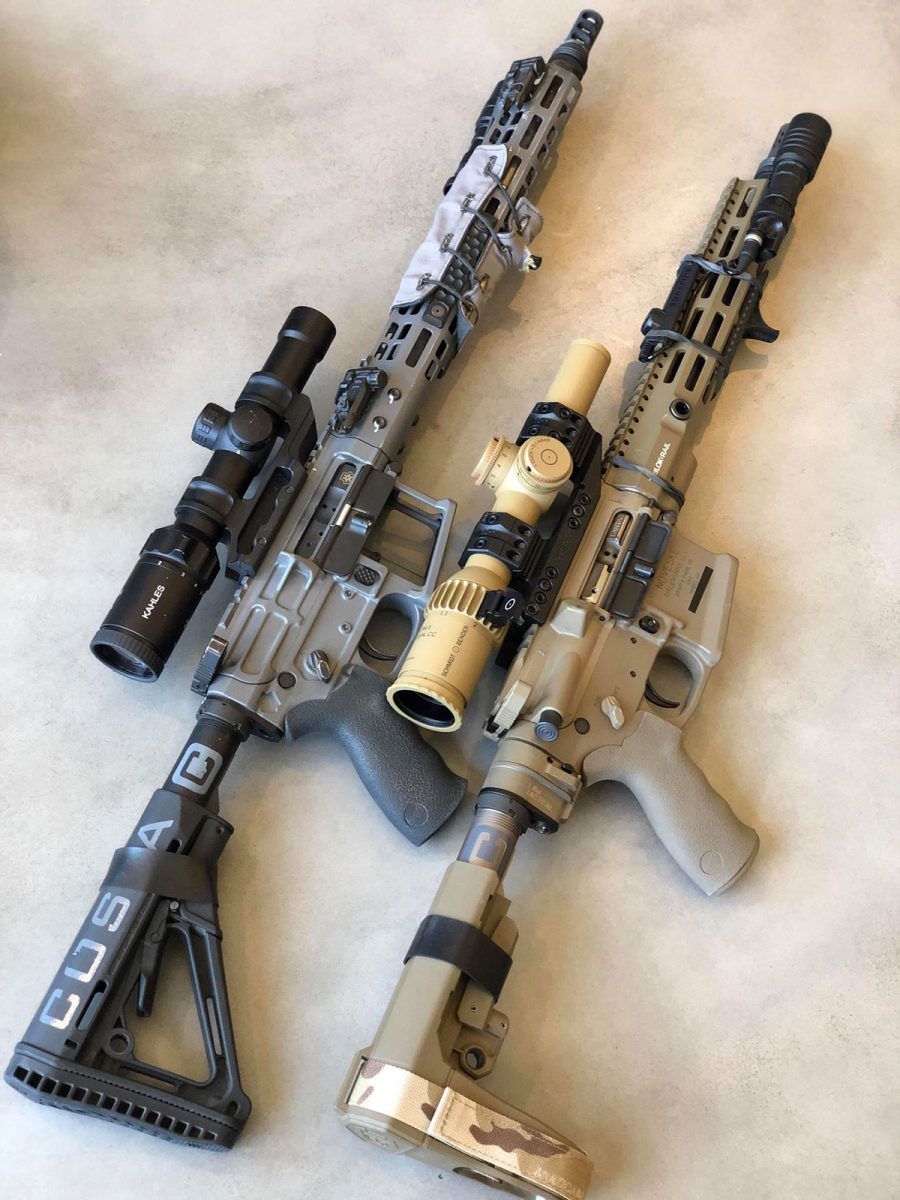
Q: Josh, for starters can we get a bit of background and talk about the idea of why quality matters with optics?
Josh Costa, Costa Defense: I am the owner of Costa Defense, located in Scottsdale, Arizona. We specialize in night vision, thermal and premium optics. LPVOs are an investment. They can cost as much or more than the rifle you put them on, but the benefit if you get into a high-end one, is that it does what a red-dot does, and it’s also a magnified optic.
Q: Is the 1x performance the key then?
Yes, you can get that “both eyes open”, good field-of-view, good brightness, and it really feels like you are shooting a red-dot like an Aimpoint T2 or something like that. That’s the difference between some of the cheaper, low-end LPVOs and the higher end ones…with the higher end optics, the 1x feels like a true parallax-free 1x. It’s quick and very, very effective.
Q: Do you have an opinion on 1-6x versus 1-8x?
Josh Costa, Costa Defense: It depends on your intended purpose with your rifle and what you want to do with it. 6x gets you on steel out to 600 meters. 8x will potentially get you out to 800, but it does depend on the caliber. But if you’re only shooting 3-Gun from zero to 300, there’s no need for a 1-8x. Now that said, the more power you have, the better you can positively identify distant targets and engage if needed.
Q: Let’s talk about what the best low power variable optics (LPVO) are right now in your opinion.
Schmidt & Bender 1-8×24 PM II ShortDot Dual CC
Josh Costa, Costa Defense: Schmidt & Bender have revolutionized the low power variable optic with the Schmidt & Bender 1-8×24 PM II ShortDot Dual CC. This particular optic was seven years in the making. They’ve teased it since SHOT Show 2010 I think…

One of the big downfalls with LPVOs is, in the first focal plane, is in order to get a good sized usable dot at 1x, like a 2-MOA sized dot, when you zoom into 8x, you are multiplying the size of that dot. So, when you are trying to shoot precision at distance, that center dot is very large and it covers a lot of area. It can cover 10, 12, 16 inches at distance. So, shooting precisely is not ideal with some of the low powered variable optics for that reason.
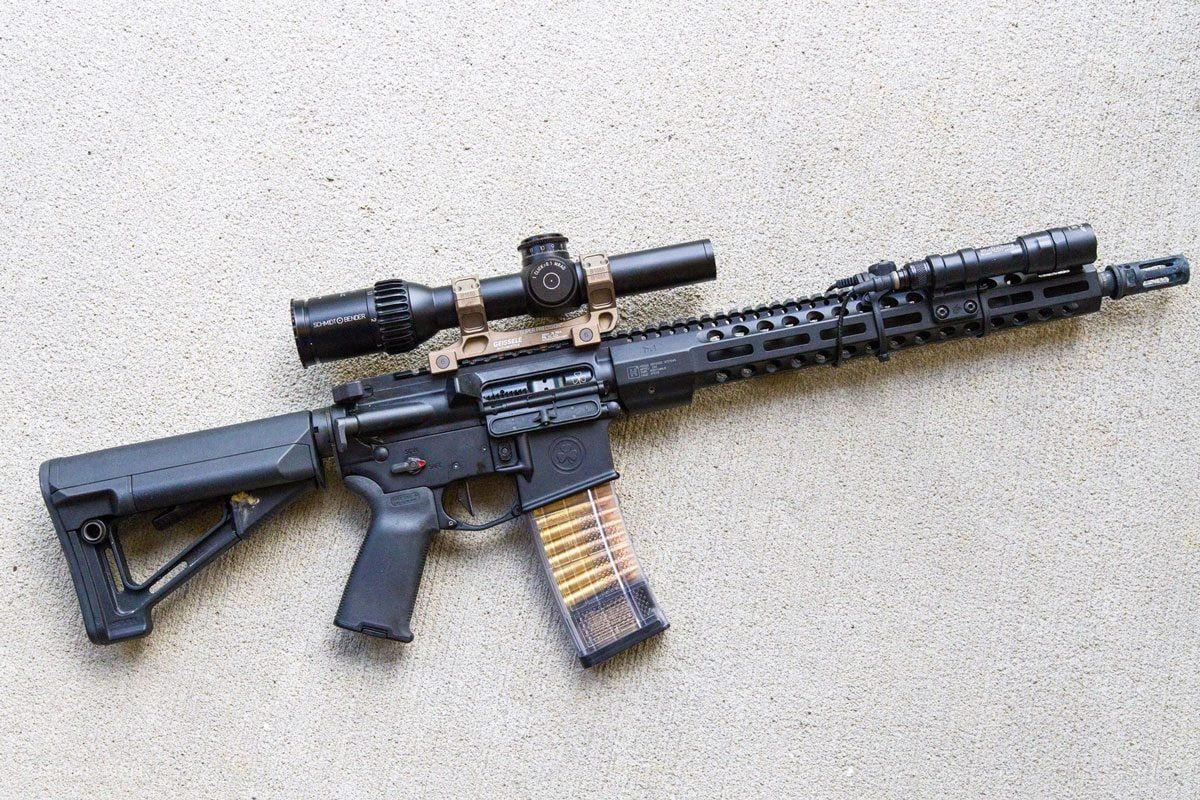
So, the Dual CC…it’s just like it sounds. It has dual planes – first focal plane and second focal plane…and dual illumination. So, when it’s in CC mode, you have a second focal plane dot, which is very, nice bright, large and easy to pick up, and then when you click over to 1.1, all the way to 8x, you are in first focal plane, with a nice, precise small dot. You get the best of both worlds. It’s the best low power variable optic (LPVO)…that said, it’s very expensive.
Kahles 1-6 SM1
Josh Costa, Costa Defense: The Kahles 1-6 has been around for a long time, and in my opinion, it is the very best 1-6x low power variable optic on the market, hands down. It is in second focal plane, which is good and bad, but I highly recommend the optic for anyone who likes to run shooting courses, shooting zero to 300 fast and on the move, or for 3-Gun guys. The reticle does not offer a ton of help as far as windage, follow-up shots, or hold overs…but with an AR where it’s point of aim, point of impact on steel is out to 300 meters, it doesn’t really matter.
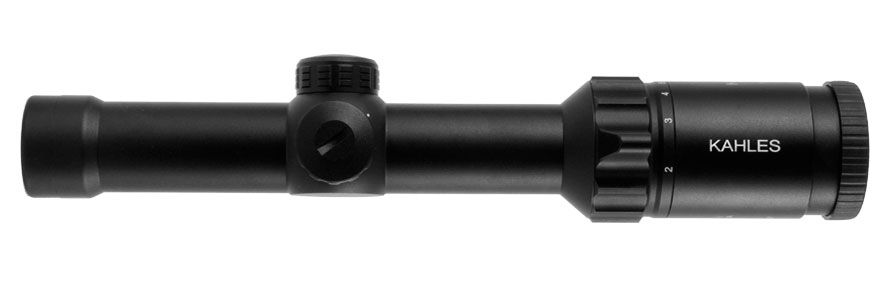
The 1x is where the Kahles 1-6 really shines…It’s absolutely insane. In my opinion, it’s better than running any dot on the market. It has the widest field of view, and the clarity and brightness is also incredible. The SM1 reticle looks a lot like an Eotech…It’s quick to pick up and do CQB training with it. With that reticle, it’s like a dream. It’s insanely fast.
The optic is also very light. It’s about a half ounce heavier than the NX8, but it is substantially longer. Finally, the price point is right at about $1,999. A lot of guys can get into that, and when they do, they are looking at an uber-premium experience.
Nightforce ATACR 1-8x
Josh Costa, Costa Defense: The Nightforce ATACR 1-8x is a huge seller and a great optic. It’s very robust and the glass clarity on it is outstanding. The 1x picks up quick, so it’s very usable…It has a 1.75 MOA center dot so that it feel like an Aimpoint T2 or any popular red dot at 1x, but when you zoom in, and you’re at 8x, shooting at 800 meters, you’re multiplying that by 1.75 inches, give or take. So, it’s covering a large area.

You’re still going to get hits, but when you’re covering 14 or 16” at that distance…shooting precision isn’t going to happen. It’s still an incredible optic. It has covered turrets so it’s designed where you just set your zero and then you’re just doing holds with the optic. It’s very fast and it’s very useful.
Nightforce NX8
Josh Costa, Costa Defense: The NX8 is the more affordable line. It’s about one thousand dollars cheaper than the ATACR 1-8x. It has exposed turrets and a zero stop. So, you can make adjustments if you want, on the fly.
It’s perhaps the lightest and shortest LPVO on the market. Incredibly short…it’s the same footprint as the 1-4x they put out years ago. It’s fast, but being that it’s so short and light, the eye box is pretty tight. I know guys that complain about them due to that. I would not recommend for a 7.62 or something that has a lot more recoil. They’re great on 5.56 ARs and if you’re looking for something that is short, light and fast, it’s a pretty awesome LPVO.
Schmidt & Bender Short Dot 1-8x
Josh Costa, Costa Defense: This is Scmidt & Bender’s classic, legacy optic. It’s been around for many years and saw a lot of use overseas with a lot of teams. It’s a very basic reticle they call their CQB2, and it’s used like the Kahles from around 0-400. The illumination is incredibly bright on it and you can see it on the brightest day in Afghanistan or Phoenix, Arizona.

It’s insanely bright and the clarity is really amazing. It’s a second focal plane optic but it’s definitely an optic that is going to be very slow to die off. Like the Kahles 1-6, it’s a classic, timeless and it’s really hard to beat. I’d also mention that the durability of the Schmidt & Bender is incredible, its robustness is a lot like that of the ATACR line from Nightforce.
Q: There’s a few other low power variable optics that many hold in high regard that you have not mentioned. I’d like your take on some of these if you don’t mind.
(the following are Josh’s comments on that optics that I mention to him due to their popularity. He did not mention them until I asked about them by name.)
Leupold Mk6
Josh Costa, Costa Defense: We have run the Leupold Mk6 and Mk8 on multiple guns over the years. I love them and I don’t ever want to denigrate them. They have seen a ton of time overseas and they have done a lot of work for our country.

The clarity is great and the reticle options are really good…my big beef with these two models is that the good reticle options are the CMR-W, which are calibrated to a rifle. There’s a 5.56 and a 7.62 version, and the holds are quick and they get you on steel fast IF you are shooting the caliber, bullet grain, and barrel length that they are intended for. So, if you’re doing that, they work well.
If you’re not and you’re running them on a 6.5 or a 300 blackout, or you’re running one on a really short or long barrel, those holds are not going to match up and there’s nothing you can do about it.
“Flicker Effect“
Another big beef with both these optics that I always warn people about, and they always thank me is the 1x…you often buy a low power variable optic to run 1x. The illumination on both of these for that is horrible. You get what I refer to as “flicker effect.”
It’s very picky on your head placement. Unless your head is perfectly placed behind the optic with just the right eye relief and eye box (side to side, up and down) you get this flicker effect where it looks like your illumination is turning on and off. So, if you’re just shooting from the bench or looking around in your back yard, it’s not a big deal. But when you’re moving and engaging targets and you add a little bit of recoil, your head placement is never going to be perfect, and so you start to get that flicker effect. It drives a lot of guys nuts.
Vortex Razor HD Gen II-E
Josh Costa, Costa Defense: The other low power variable optics we have talked about, I personally have literally several hundreds of hours on each of them…both in the field, and in the shop. I know them like the back of my hand. With the Vortex Razor HD Gen II-E 1-6, I have had some time with it on two different rifles, but it is not over 100 hours, so I need to state that up front. My initial thoughts on it are that it is heavy…The glass clarity on it is very good. I really don’t have any beef with the optic for its price point.
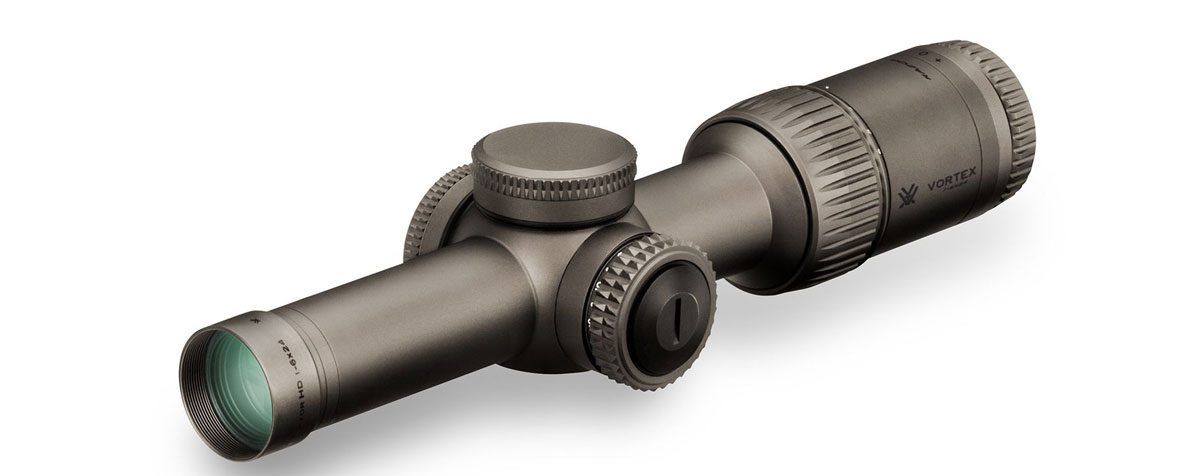
That being said, I cannot, with a straight face, recommend the optic on a firearm being used as life-saving device. I say this because in the short time we sold Vortex, we started getting returns for broken reticles, turrets, and stuff like that…As such, I just cannot say with certainly that the optic is a 100 percent. The other optics we’ve talked about for this article…I have had zero issues with any of those.
Q: Any final advice you think readers should know about the best low power variable optic (LPVO)?
Josh Costa, Costa Defense: I always tell people if they don’t have the money, just save up and wait, or put a quality red dot on your rifle until you are able to buy the right low powered variable optic. In my opinion, the more you spend, the better you get. That’s the case with a lot of things, but most certainly with optics. For $1,700 to $2,000, you can get a really nice optic that is going to last you a lifetime and offer a ton of features.
Q: So, if you had to pick one…Let’s say you have a standard 14.5” pin and weld. What do you choose?
Josh Costa, Costa Defense: For me, for a “do-it-all” gun, if you have the money, the Schmidt & Bender Dual CC is it. With a 12.5”, we were engaging targets at over 700 yards the other day. We then did a CQB shoot house with it. It is the best low power variable optic and it’s the one that does it all. But, all that comes at an absolutely huge price point.
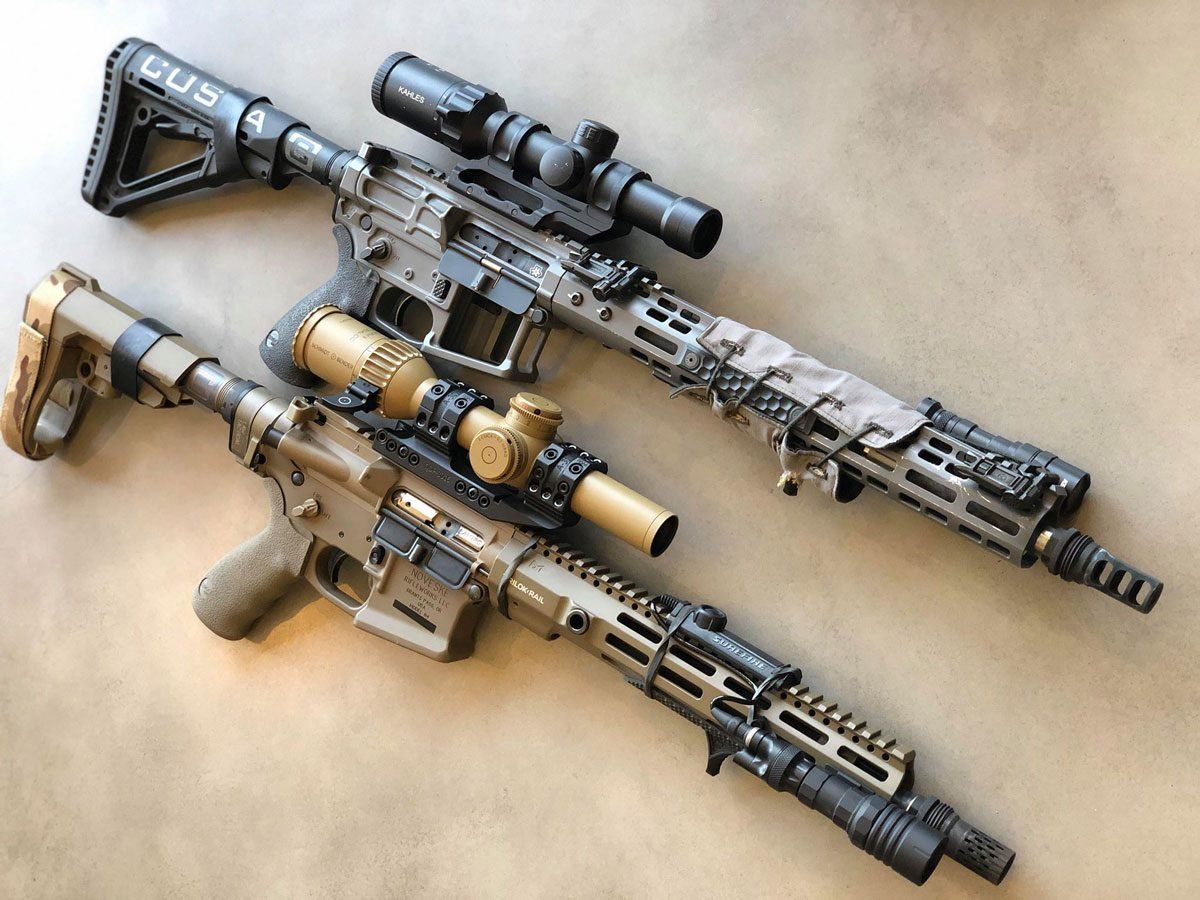
For guys that don’t have that $4,000 to spend, I would go back to the question of do you need to really go 0 to 600, or do you want to do want a realistic 0-300 optic. For the 0-300, I would select the Kahles 1-6. If I needed the do-it-all 0-600, I would go with the Nightforce ATACR 1-8.
###
A tremendous thank you to Josh Costa for his help with this article about choosing the best low power variable optic (LPVO) and for many of the photos of his collection…For more information on Costa Defense, visit them at costa-defense.com, or on Instagram at Costa_Defense. We look forward to working with Josh again in the near future to discuss night vision basics. Look for that article in the weeks ahead.
For more information on Alex Hartmann and everything going on at Ridgeline, you can visit ridgelineshooting.com
Editors Note: As a final reminder, low power variable optics are a big purchase, but this is one place where I certainly would not skimp to save a few hundred bucks. Please do your research up front and consider saving towards something that will keep you happy over the long term…it will save you a lot of frustration on the back end.
Also, it should go without saying that there are some very informed individuals we were unable to consult with for this article. One such person is featured in the video below. Be sure to give this a watch as part of your research.




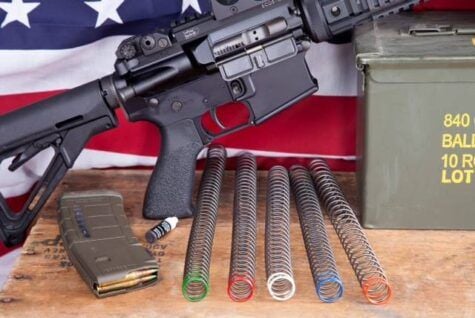
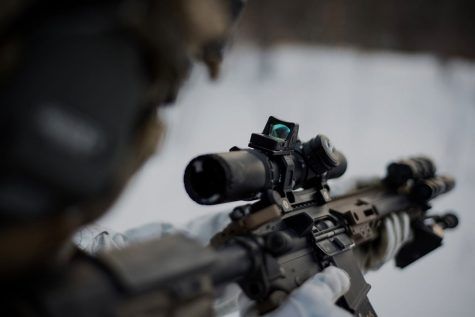
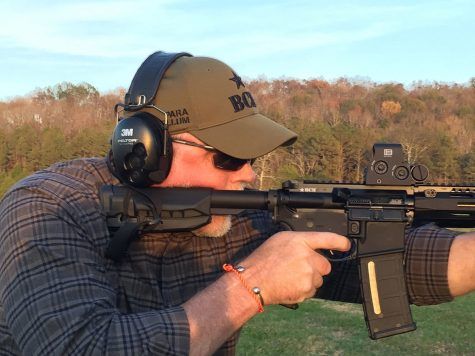
I’ve read a few LPVO articles from arbuildjunkie and have yet to see the Trijicon VCOG 1-6 mentioned. Why is that? It is ffp, various reticles, and a reputable name behind it.
I am going to try to get some feedback for you for this optic. I assume you have? If so, what has been your experience so far?
here’s something I found…would certainly be worth some more research. I do have some feelers out to get more info: https://primaryandsecondary.com/forum/index.php?threads/crunching-a-bit-on-lpvos-razor-vs-vcog.4526/
Hey Matt,
The VCOG is one of those optics that burned out as quick as it popped up. Solid optic, solid company! Trijicon was a little late to the 1-6 party with it though, 1-8s were starting to be developed more widespread and everyone was wanting to try the new 1-8 frenzy, so in turn they didn’t get much mention/use over the years. Mostly because of timing in my opinion. Also the reticles only come in “calibrated” opinions which is a love or hate thing for most guys. Hope that helps.
That definitely sheds some light on it. Thanks!
Lots of decent information, except all the scopes are for rich folk.
It feels quite elitist
https://www.arbuildjunkie.com/best-ar-15-scopes-steve-yeti-fisher/
this might help you out. no intention to be elitist.
Thanks for a great article. Didn’t even know what a LPVO was until today. I am very familiar with buy once cry once.
Missed a really good one that isn’t armored like a SB but has similar optical quality. Can’t bullshit with optics. Just need to look through it.
What do you think of the stats on the Trijicon Ascent 1X4X24 Model 2800001?
I can’t find any reviews. Would this be a decent entry level LPVO or am I going to wish I spent a little more for Illumination? Thanks for a great article.
Since first appearing on the market in 2008, Xtreme Tactical Sports products have been recognized for their innovative designs, durability, and cost effectiveness. Held to the strictest standards, XTS products are manufactured from only the highest quality materials and are backed by some of the most generous manufacture warranties in the industry. Comparable to some, rivaled by none, XTS products simply get it done!